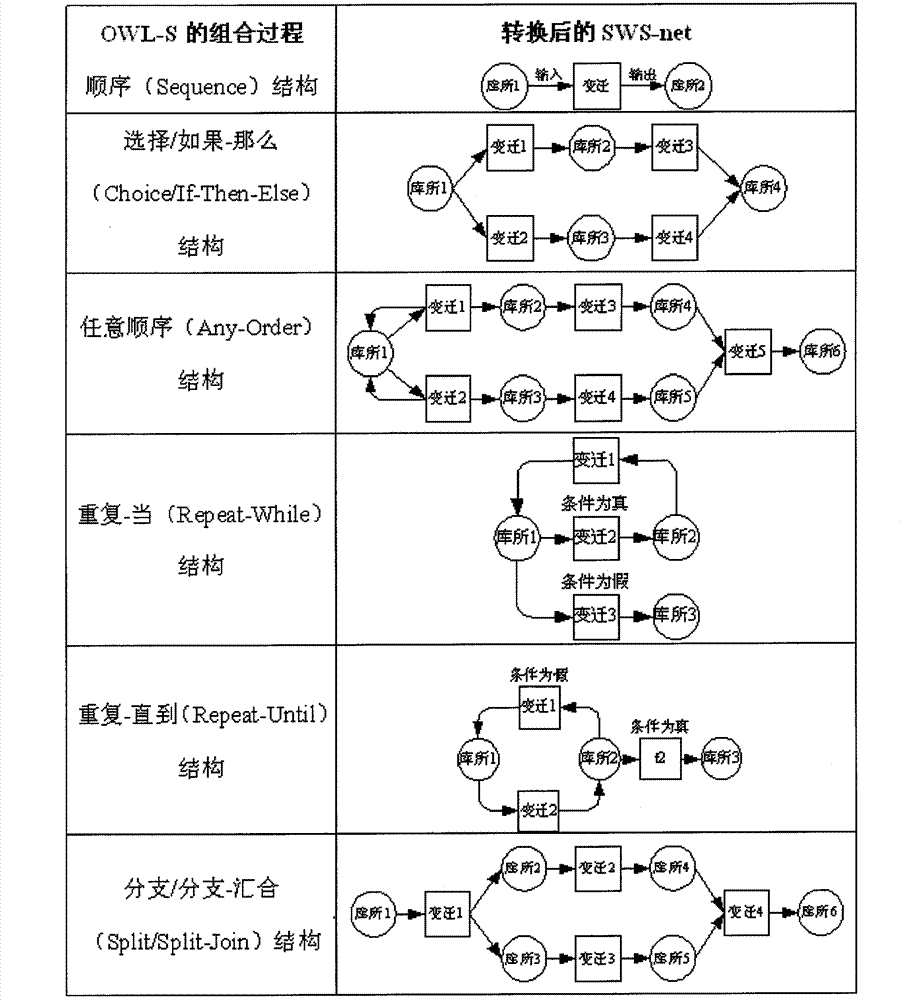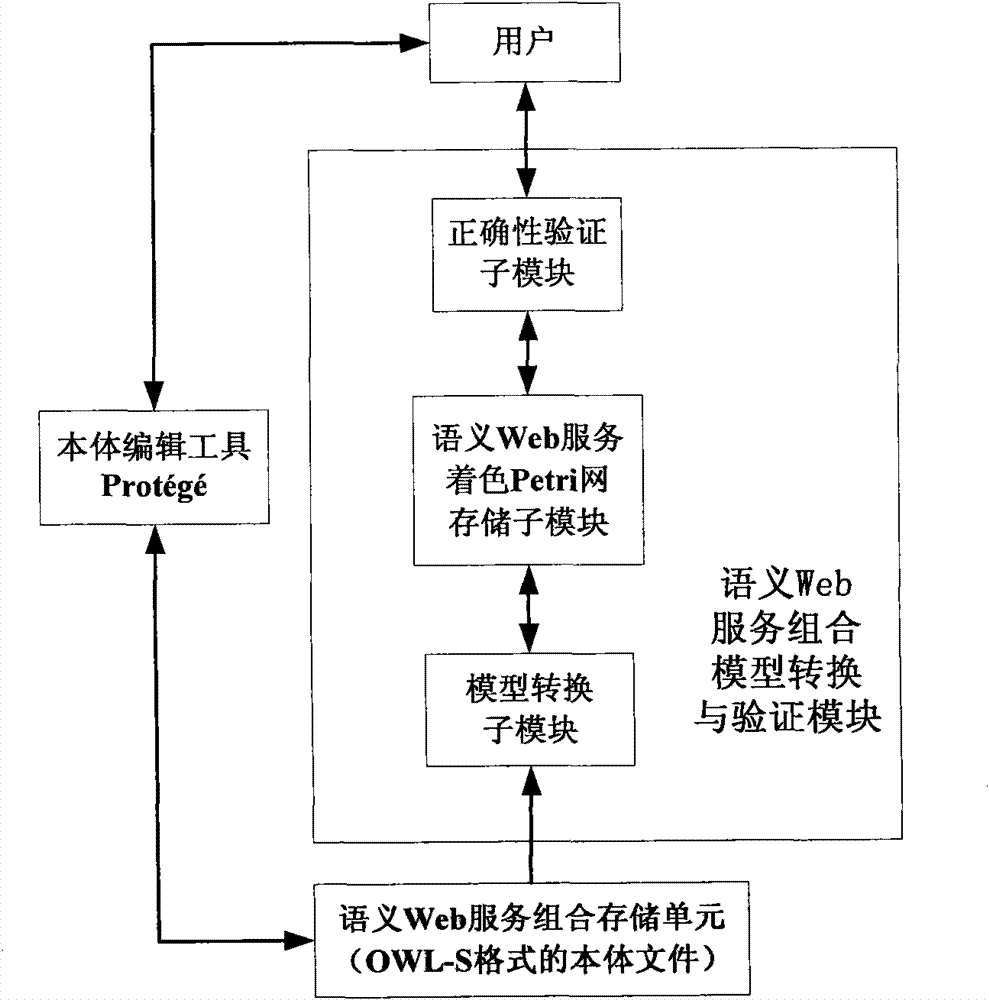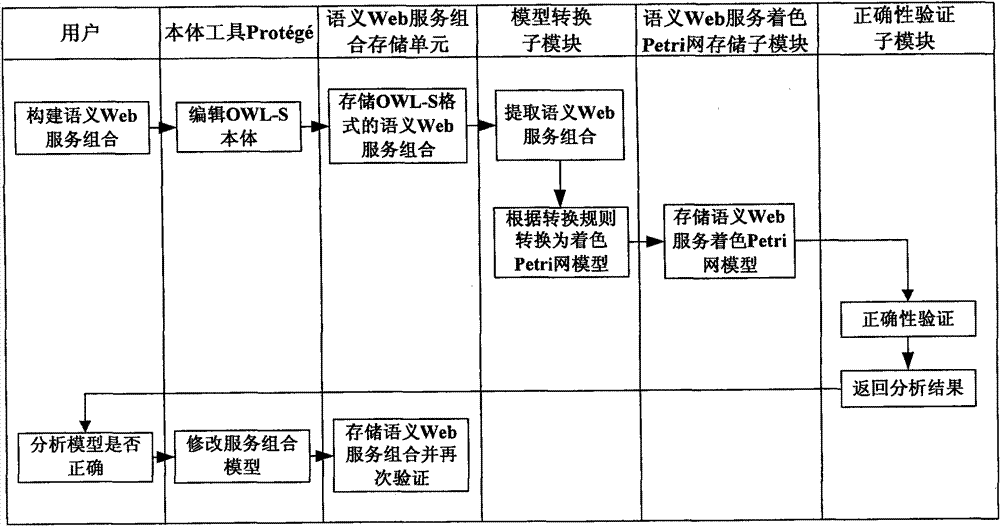Model conversion and formalization verification method of semantic Web service combination
A formal verification and model conversion technology, applied in the field of Semantic Web and Web services, can solve problems such as no process ontology involved, no model correctness verification, no arcs allowed in places or transitions, etc., and achieve the effect of a simple model
- Summary
- Abstract
- Description
- Claims
- Application Information
AI Technical Summary
Problems solved by technology
Method used
Image
Examples
Embodiment Construction
[0072] Described method is realized by following steps successively:
[0073] Step (1), computer initialization
[0074] Install the ontology modeling tool Protégé, which is used to create, delete, and modify ontology, and store the ontology as the format of the network Web service ontology modeling language OWL-S,
[0075] Constructing a semantic Web service composition storage unit for storing the semantic Web service composition model constructed by the Web service ontology modeling tool Protégé and expressed in the OWL-S format,
[0076] Install the semantic Web service composition model conversion and verification module, including: model conversion submodule, semantic Web service coloring Petri net storage submodule and correctness verification submodule, of which:
[0077] The model conversion submodule is used to convert the semantic Web service combination stored in the semantic Web service combination storage unit into a colored Petri net model, and the converted mo...
PUM
 Login to View More
Login to View More Abstract
Description
Claims
Application Information
 Login to View More
Login to View More - R&D
- Intellectual Property
- Life Sciences
- Materials
- Tech Scout
- Unparalleled Data Quality
- Higher Quality Content
- 60% Fewer Hallucinations
Browse by: Latest US Patents, China's latest patents, Technical Efficacy Thesaurus, Application Domain, Technology Topic, Popular Technical Reports.
© 2025 PatSnap. All rights reserved.Legal|Privacy policy|Modern Slavery Act Transparency Statement|Sitemap|About US| Contact US: help@patsnap.com



